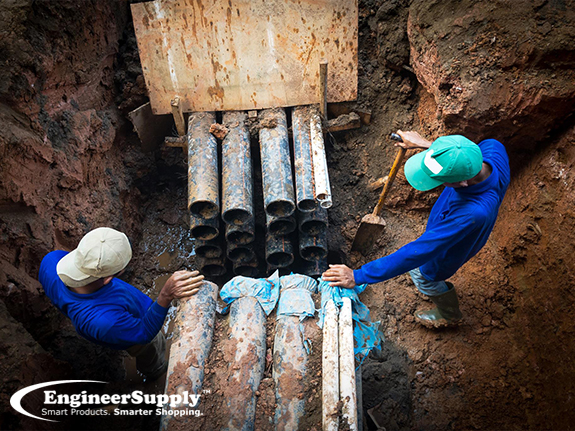 It’s the homeowner’s responsibility to know how deep water, electrical, or gas lines running through their property are buried, which is why you should call before you start digging. Knowing where underground utility lines are located before excavation will protect you from injury and could even save your life. It can also keep the lines from getting damaged, which could not just affect you but everyone else in your area. Even if you’re planting trees or getting a pool installed, a simple phone call can save you thousands.
It’s the homeowner’s responsibility to know how deep water, electrical, or gas lines running through their property are buried, which is why you should call before you start digging. Knowing where underground utility lines are located before excavation will protect you from injury and could even save your life. It can also keep the lines from getting damaged, which could not just affect you but everyone else in your area. Even if you’re planting trees or getting a pool installed, a simple phone call can save you thousands.
The depth of utility lines will vary with each area, and a lot of them may be running through a single location. Flags and other markings will show you their approximate location, but you should use a utility locator to make sure you don’t hit one of them accidentally. Every single public utility company must have a “one-call locator service,” which you can reach by dialing 811. This will allow you to request the location and markings of buried utility lines.

Using a Utility Locator to Find Buried Lines
People who get paid to find underground utility lines have a wide variety of tools to find what they can’t see — that is, if these lines have some type of metallic element. An underground utility locator is meant to find these components underground. For most older lines that use copper wire or some type of metallic substance, an electromagnetic tool will get the job done. But you may have to use a more advanced pipe locator that can detect newer systems.
These utility location tools can be either active or passive. Passive methods are typically used to find facilities that already have an AC signal (such as power lines or telecommunication tables). This can be tricky, because the signal strength will depend on what’s going on with the circuit itself. Passive detection methods can also include the use of magnetometry to find weak magnetic fields being generated by utility lines. It can also involve the use of ground-penetrating radar to look at what’s beneath the surface, which can be used to build an image of where every buried structure is located.

When you’re using the active detection method for an underground utility locator, you apply a current set to a specific frequency that the device can detect. And you can do this to any above-ground location (such as a water or gas meter). An AC signal runs through the line from the transmitter, which turns into an antenna. And sometimes, utility companies will run copper wire along the length of a plastic line to help with this process. You can use a handheld receiver to search for the signal, but a transmitter can sometimes be threaded into the pipe as the receiver picks up the signal as the probe advances.
If you’re looking for a pipe locator or any other utility location device, be sure to look at what we have at Engineering Supply.